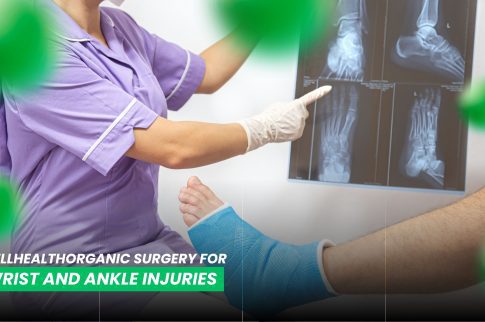Loguytren Problems: Is This a Life-Threatening Condition?

Table Of Contents
Loguytren problems, also known as Dupuytren’s Contracture is a health condition that develops slowly. It affects the cognitive tissues under the skin of the fingers and palm. With time, these tissues become thick and form tight cords.
This pulls the fingers inward close to the palm. This mostly happens to the fourth and fifth fingers, which are bent and then get stuck in that form.
Although it is painless, it significantly affects the hands and hinders daily activities. It is essential to understand the causes, symptoms, and treatment options for this condition to handle the situation effectively.
What Are Loguytren Problems?

The term “Loguytren problems” is mostly misspelled as the term Dupuytren contracture. This is a persistent and progressive hand deformity. This specific condition mostly affects the palmar fascia, the tissues under the palm skin.
Over time, this tissue becomes severely dense and tightens the scar, pulling one or more fingers into a curved position. This condition is not caused by overuse or trauma. It is a familial connective tissue disorder.
Treating the condition is important. Even though the condition develops slowly, you may not regain your hand functions if not handled properly.
Symptoms of The Condition

If you identify the symptoms early, it can influence the outcome of the treatment. The symptoms continue to worsen over time, so it is essential to recognize them early. Early detection can help manage the condition more effectively.
- Thickening of the skin: You might notice a nodule or lump close to the base of the little finger or the ring finger.
- Finger contracture: One or more fingers have bent down, and you cannot straighten them.
- Formation of cords: These are tissue bands that pull the fingers towards the palmar mass.
- Loss of hand function: It causes trouble with performing daily activities, such as tying shoelaces, shaking hands, and grasping objects.
The condition is generally painless, but you might experience some tenderness or pain in the initial stage.
Risk Factors & Causes

The exact cause of the condition is still not clear; various environmental and genetic factors have been identified as potential triggers. Here are some of the major risk factors.
- Genetics: A family history of loguytren problems increases the risk of developing this condition. According to studies, more than 30% of people suffering from the condition have a relative with this condition.
- Gender: Men are more commonly affected by this condition. They are more likely to get the condition than women, with a ratio of approximately 3:1.
- Age: This condition is more common in people over the age of 50, and it tends to worsen with age.
- Alcohol: Chronic alcohol consumption is believed to be a trigger factor. People with a drinking habit are exposed to the risk of getting this condition.
- Smoking: Nicotine is also a contributing factor to the thickening of palm tissues.
- Ethnicity: This particular condition is more common in people of Northern European descent.
- Diabetes: Individuals with diabetes are at a higher risk of developing this condition. Moreover, they often create other connective tissue disorders as well.
Diagnosis of The Condition

Loguytren problems do not require any complex testing; it is quite straightforward. A simple physical examination performed by a healthcare professional will suffice.
- Visual and tactile exam: A doctor will examine your hand for cords, nodules, and any signs of contracture.
- Tabletop test: Doctors ask their patients to keep their hands on a flat surface. If you cannot do so, it is an indicator of contracture.
- Imaging tests: This is rarely necessary, but doctors may request an X-ray or MRI to help understand any underlying condition.
- Review of medical history: It is essential to understand the family history and any other relevant conditions that may aid in diagnosis and treatment.
Treatment Options

Well, to be honest, there is no cure for Loguytren problems. However, there are other treatment options available to slow down the progression, relieve symptoms, and improve hand function. You must choose the treatment option based on the severity of the condition.
Non-surgical Treatments
These treatment option is used in the early stage or when the symptoms are not so severe.
- Steroid injections: They slow down the progression and reduce inflammation.
- Enzyme injections: This helps with dissolving the cords.
- Needle aponeurotomy: This is a minimal procedure where doctors use a needle to break the cords.
Surgical Treatments
When contractures become severe and hinder hand function, surgery may be necessary.
- Finger joint fusion: This procedure is performed in extreme cases where the joint is fused to improve alignment.
- Fasciectomy: With this procedure, the thickened tissues are removed.
- Dermofasciectomy: This procedure removes the skin and the tissues, and may even require skin grafts.
Complication If Left Untreated
If you do not address the problems on time, this can cause severe complications, and lastly, you might lose hand function completely.
These fingers will be bent even more with time, and you will be unable to do even the simplest of things. Some of the major complications are:
- Joint stiffness
- Permanent finger contracture
- Skin ulcers
- Grip strength reduces
- Psychological and emotional impact
Are There Any Prevention Strategies?

There is no proven way to prevent this, especially if there is a history of the condition. However, some lifestyle choices can reduce the risk of developing this condition.
- Quit smoking as it tends to restrict blood flow and make tissue conditions worse.
- Engage in hand stretching exercises to maintain the flexibility of your palms and hands.
- Limit alcohol consumption to reduce connective tissue disorder risks.
- Manage other conditions, especially if you have thyroid and diabetes.
- Check your hands regularly if there is a family history of this condition.
Live With This Condition
People living with this condition must make some adjustments to their daily lives.
- For ergonomic grips, use pens, keyboards, and utensils to reduce strain.
- Apply warm compress to relax the tissues befire stretching.
- It is advised to work with therapists to reduce pressure and modify tasks.
- Join a support group and share your experience with others who are living life with the same condition.
Live a Better Life
Loguytren problems or Dupuytren contracture is nothing life-threatening. However, it affects your overall quality of life and daily interactions.
If you are aware of the condition at an early stage and intervene promptly, you can manage the condition effectively.
If you are choosing surgery or going with the non-surgical treatment options, it is better to understand the condition completely and how it can affect you. This will help you make better lifestyle and health decisions.
Read More:

























